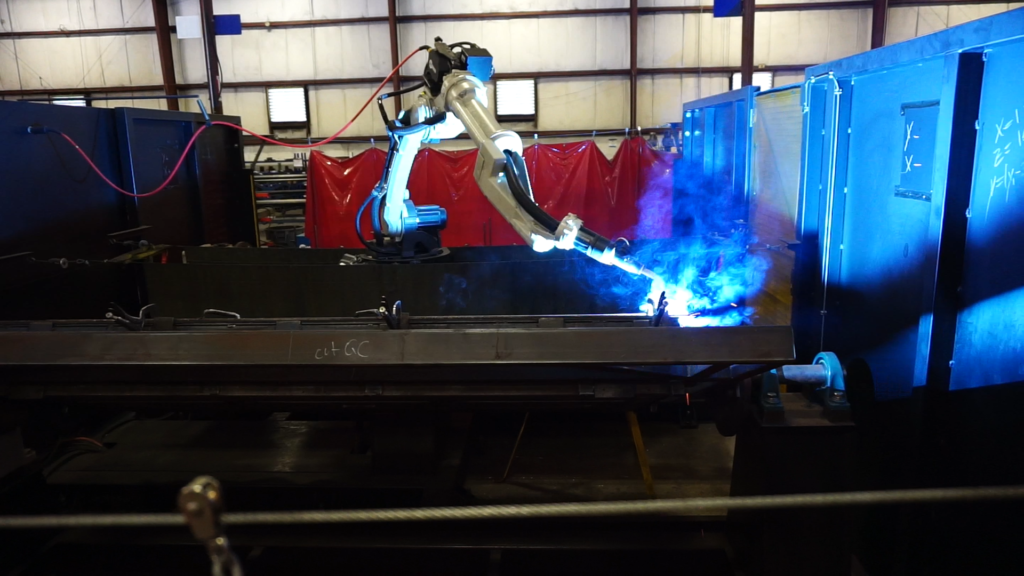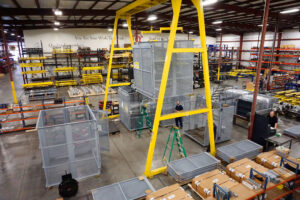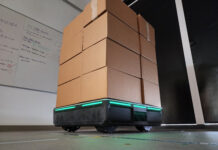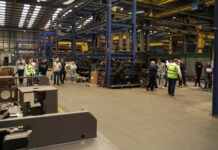 It all began with a sketch on a cocktail napkin. Henry Powers and Darlene Taylor, who owned a small construction equipment company in Melbourne, Florida, were attending a regional tradeshow when a customer described a piece of material handling equipment he’d envisioned that far exceeded the traditional baskets that were available on the market at that time. He wanted a multi-level enclosed lift to carry substantial material loads from as high as five stories up to the warehouse floor. Henry and Darlene got busy, and Custom Industrial Products (CIP) introduced the first Vertical Reciprocating Conveyor (VCR) lift in 1995.
It all began with a sketch on a cocktail napkin. Henry Powers and Darlene Taylor, who owned a small construction equipment company in Melbourne, Florida, were attending a regional tradeshow when a customer described a piece of material handling equipment he’d envisioned that far exceeded the traditional baskets that were available on the market at that time. He wanted a multi-level enclosed lift to carry substantial material loads from as high as five stories up to the warehouse floor. Henry and Darlene got busy, and Custom Industrial Products (CIP) introduced the first Vertical Reciprocating Conveyor (VCR) lift in 1995.
Since the internet had not yet taken off, marketing the product was fairly rudimentary, consisting of two people, a pickup truck, and the Thomas Register. Henry hit the road, traveling from city to city selling the concept of the VRC to prospective buyers while Darlene scouted out potential customers in the next town on his itinerary. As they began to gain traction, the company moved from a 5,000 square-foot facility to 10,000 square feet. It is now headquartered in a 110,000 square-foot manufacturing plant, according to Tom Tenney, the company’s CEO.
 “Although we have our roots here on the ‘Space Coast,’ we now have customers across North America,” he says. “We have representation in the United States, Canada, and the Caribbean, but all of our products are manufactured and ship out of our facility in Melbourne.”
“Although we have our roots here on the ‘Space Coast,’ we now have customers across North America,” he says. “We have representation in the United States, Canada, and the Caribbean, but all of our products are manufactured and ship out of our facility in Melbourne.”
Tenney says VRCs provide a number of advantages over freight elevators. They are far less expensive, for one, since freight elevators can cost five to six times as much, and they are much safer than forklifts. They have fewer moving parts than freight lifts, so less maintenance costs can be expected, and they are designed to run continuously at peak performance, with no disruption to the movement of materials. He also points out that freight elevators are also bound by far more safety regulations than are VRCs. CIP also sells standard material baskets that can be moved via forklifts or overhead cranes. Both devices aid in limiting personal contact in the workplace during the pandemic.
Since the first VRC was introduced, there are now five standard models available, each of which can be modified according to the end user’s needs. Tenney says that about 40 percent of the VRCs they ship require slight modifications, in terms of features or dimensions. While some of these are quite easy to accomplish, others are more challenging, such as working with a customer who is building a new facility and has very specific needs in mind.
 “When that’s the case, we’ll spend as much time as is required on-site working with the customer to determine exactly what their goals are,” Tenney says, “whether that takes six weeks or six months. We make sure that our VRC meshes seamlessly with their automation and provides the dimensions and capacity required to handle the size and volume of materials they will be transporting throughout their warehouse.”
“When that’s the case, we’ll spend as much time as is required on-site working with the customer to determine exactly what their goals are,” Tenney says, “whether that takes six weeks or six months. We make sure that our VRC meshes seamlessly with their automation and provides the dimensions and capacity required to handle the size and volume of materials they will be transporting throughout their warehouse.”
Tenney explains that the basic setup for a VRC system involves a central unit providing vertical access to any number of floors in the warehouse. The VRC is stationary, from a horizontal standpoint. Automation on each floor of the warehouse carries materials to the VRC where it is loaded manually or via robotics, and the enclosed cage then relocates to another floor or drops down to unload.
Looking down the road at the future of material handling in general, Tenney sees opportunity in the changes headed CIP’s way. “Transactions are taking place online more than ever before, so we have to be creative in building out our website so that our customers can choose the options they’re interested in quickly and easily,” he says. “Robotics and automation also present opportunities that we probably haven’t even begun to realize at this point, so that’s an exciting avenue to consider. The company was founded on an idea that a customer shared with us, and we continue to listen to their ideas and concerns because that’s how you stay on the leading edge.
Visit Custom Industrial Products, Inc.,












































